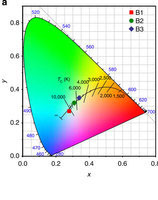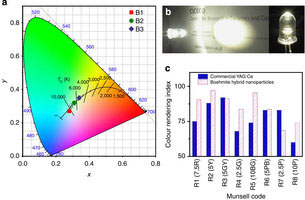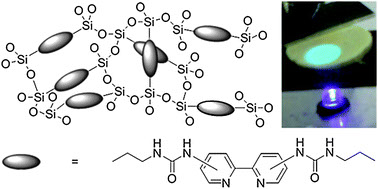


<
>
PHOTONIC HYBRIDS AND NANOMATERIALS GROUP
Aveiro-Portugal
university of aveiro
theoria poiesis praxis
physics department
ciceco
aveiro institute of materials


HOME > RESEARCH > RESEARCH LINES > SOLID-STATE LIGHTNING


PEOPLE
Rute A.S. Ferreira
Luís D. Carlos
Lianshe Fu
RESEARCH HIGHLIGHTS
X. Bai, G. Caputo, Z. Hao, V. T. Freitas, J. Zhang, R. L. Longo, O. L. Malta, R. A. S. Ferreira, N. Pinna, "Efficient and tuneable photoluminescent boehmite hybrid nanoplates lacking metal activator centres for single-phase white LEDs" Natt. Comm. 5, 5702 (2014), http://dx.doi.org/10.1038/ncomms6702
White light-emitting diodes (WLEDs) are candidates to revolutionize the lighting industry towards energy efficient and environmental friendly lighting and displays. The current challenges in WLEDs encompass high luminous efficiency, chromatic stability, high colour-rending index and price competitiveness. Recently, the development of efficient and low-cost downconverting photoluminescent phosphors for ultraviolet/blue to white light conversion was highly investigated. Here we report a simple route to design high-efficient WLEDs by combining a commercial ultraviolet LED chip (InGaAsN, 390 nm) and boehmite (γ-AlOOH) hybrid nanoplates. Unusually high quantum yields (ηyield=38–58%) result from a synergic energy transfer between the boehmite-related states and the triplet states of the benzoate ligands bound to the surface of the nanoplates. The nanoplates with ηyield=38% are able to emit white light with Commission International de l’Eclairage coordinates, colour-rendering index and correlated colour temperature values of (0.32, 0.33), 85.5 and 6,111 K, respectively; overwhelming state-of-the-art single-phase ultraviolet-pumped WLEDs phosphors.
J. Graffion, X. Cattoën, V. T. Freitas, R. A. S. Ferreira, M. Wong Chi Man, L. D. Carlos, “Engineering of Metal-Free Bipyridine-Based Bridged Silsesquioxanes for Sustainable Solid-State Lighting”, J. Mater. Chem. 22, 671–6715 (2012); http://dx.doi.org/10.1039/C2JM15225H
We demonstrate an improvement of the emission quantum yield and the luminance figures of merit of metal-free bridged silsesquioxanes—by a factor of 2, 0.43 ± 0.04, and by two orders of magnitude, (1.4 ± 0.1) × 104 cd m−2, respectively—by changing the regioisomer of the silylated precursor. The organic–inorganic hybrids are easily excited by commercial blue InGaN-based light emitting diodes displaying an intriguing potential to applications in green photonics as metal-free phosphors for solid state lighting.




MADE BY PHANTOM-G, AVEIRO, PORTUGAL
